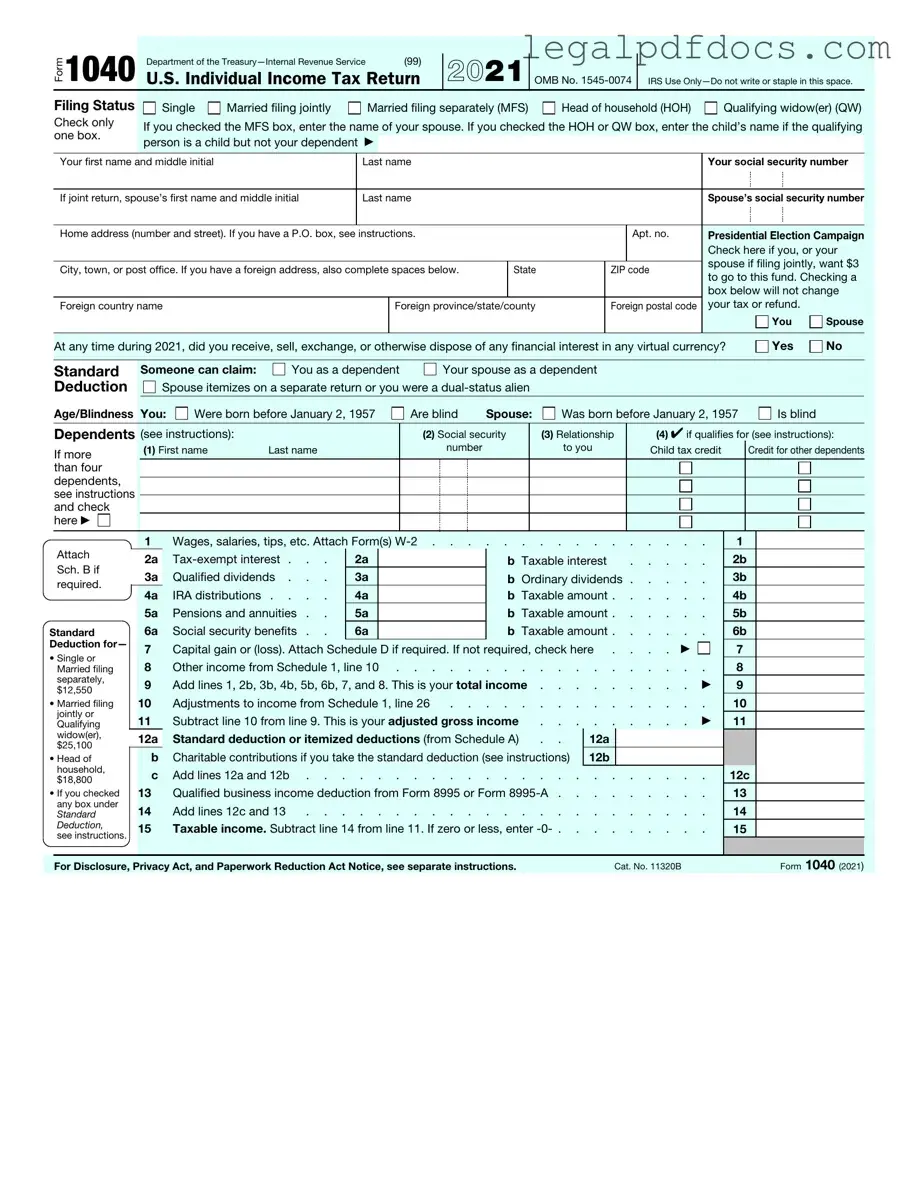The IRS 1040 form is a vital document for many Americans during tax season. This form allows individuals to report their income, claim deductions, and calculate their tax liability. Whether you're a salaried employee, self-employed, or a retiree, the 1040 form provides a structured way to present your financial information to the government. It includes sections for reporting wages, dividends, capital gains, and other sources of income. Additionally, taxpayers can claim various credits and deductions, such as the standard deduction or itemized deductions, which can significantly affect the amount of tax owed or refunded. The form also accommodates different filing statuses, allowing individuals to choose the one that best fits their situation, whether single, married filing jointly, or head of household. Understanding the nuances of the 1040 form is essential for ensuring compliance with tax laws and maximizing potential refunds. As you prepare to fill out this important document, knowing its key components will help streamline the process and alleviate some of the stress that often accompanies tax season.
